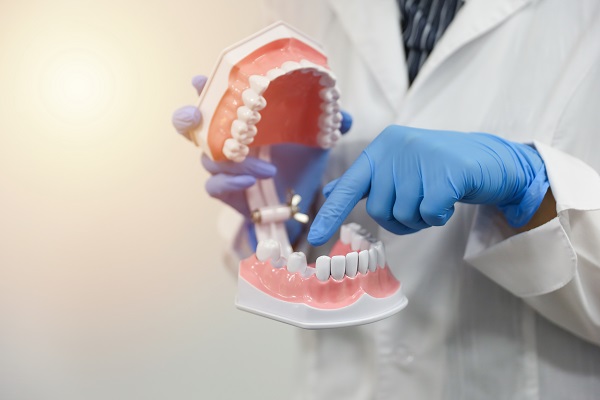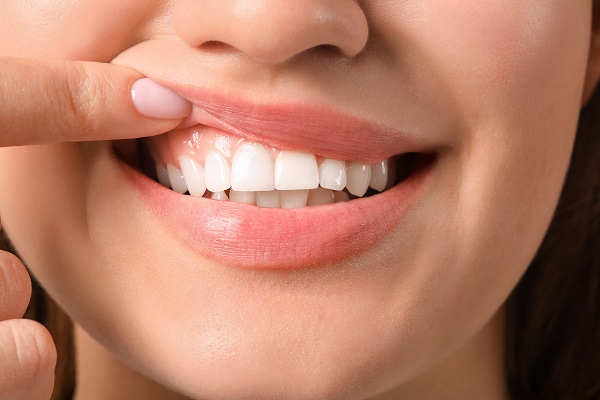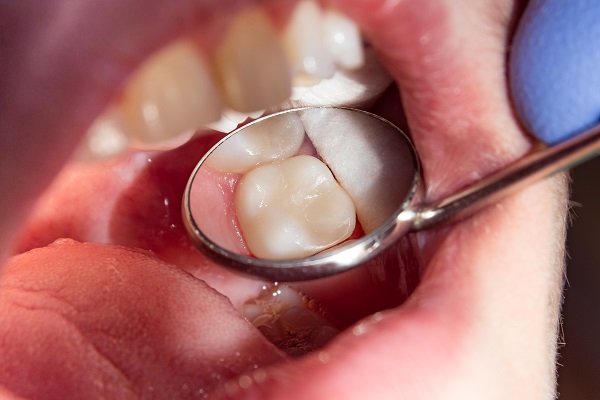Invisalign vs. Braces: Which Clear Path to a Straighter Smile Is Right for You?

Dr. Simranjit S. Bawa, DDS - a top Diamond+ Invisalign provider - is a proud Potomac native and US-born Sikh whose unwavering commitment to community service and dentistry sets him apart. With a Bachelor's in Biology from American University and a DDS from Howard University, Dr. Simranjit S. Bawa seamlessly integrates state-of-the-art technology with personalized care for patients of all ages. Driven by a passion for prevention and esthetics, Dr. Simranjit S. Bawa excels in everything from full mouth reconstructions to porcelain crowns, ensuring each treatment plan is tailored to enhance smiles and gum health. Off-duty, you'll find him cherishing family time, shooting hoops, hitting high notes, and indulging in culinary adventures from across the globe. Ready to experience dentistry with a personal touch? Say hello to Dr. Simranjit S. Bawa today!
Introduction
Embarking on a dental journey is a significant decision-one that reshapes not only your smile, but your confidence and oral health for years to come. At Potomac Crown Dentistry, patients often ask, Braces or Invisalign? Expert guidance from Dr. Bawa in North Potomac can clarify which approach best aligns with individual needs and lifestyles. In this in-depth guide, we’ll explore the nuances of clear aligners and traditional braces, offering Dr. Bawa Invisalign vs. braces comparison in North Potomac, MD, to help you make an informed choice tailored to your smile goals.
Understanding Your Dental Options
What Are Traditional Braces?
Traditional braces consist of metal-or sometimes ceramic-brackets bonded to each tooth, connected by an archwire that applies continuous, controlled forces to shift teeth into place. Over monthly adjustments, your dentist fine-tunes tension by replacing or bending wires and adding elastic bands to correct bite issues.
What Are Clear Aligners?
Clear aligners are a series of removable, transparent trays custom-fabricated using digital scans of your dentition. Each tray is designed to move teeth incrementally, typically worn 20–22 hours per day and swapped out every one to two weeks. This Clear aligners vs. metal braces – Dr. Bawa’s insights underscores that while both methods reposition teeth, they differ vastly in esthetics, comfort, and daily life integration.
Step-by-Step Treatment Processes
The Braces Workflow
1. Initial Consultation & Bonding- Comprehensive exam including X-rays and impressions.
- Brackets are bonded, archwire placed, and the first elastics applied.
- Your dentist visits every 4–6 weeks to tighten wires, adjust forces, and monitor progress.
- For complex cases, headgear, springs, or elastics correct jaw alignment and bite.
- Once alignment is complete, brackets are removed. A bonded or removable retainer preserves results.
The Invisalign Workflow
1. Aligner Fabrication- Each aligner is precision-manufactured to fit your teeth at each treatment stage.
- Wear each set for 20–22 hours/day, removing only to drink, and clean.
- Visits every 6–8 weeks ensure tracking against the digital plan; refinements made as needed.
- Upon finishing aligner sets, you transition to retainers to maintain your new alignment.
This outline illustrates Dr. Bawa Invisalign vs. braces comparison in North Potomac, MD, by walking through practical, real-world steps for each treatment modality.
Benefits at a Glance
Why Choose Invisalign?
-
Discreet Esthetics:
Virtually invisible, ideal for image-conscious teens and adults. -
Enhanced Comfort:
Smooth, BPA-free SmartTrack® material minimizes sore spots. -
Lifestyle Freedom:
No food restrictions; aligners are not required to be removed for meals. -
Simplified Hygiene:
Brush and floss without brackets in the way. -
Digital Predictability:
Preview your smile transformation before treatment begins. -
Broad Scope:
Braces can correct the most severe bite and alignment issues. -
Guaranteed Force:
No risk of patient non-compliance compromising tooth movement. -
Cost-Effectiveness:
Often less expensive upfront than aligners for complex cases. -
Customization:
Choose colored ligatures or ceramic brackets for a personalized look. -
Adaptive Stiffness:
New thermoplastic formulations can vary stiffness over a treatment cycle-stiffer when you first insert the tray to initiate movement, then softer later for patient comfort. -
Shape-Memory Polymers:
Imagine aligners that “remember” tooth positions, exerting consistent force even as they flex and bend. This reduces force decay, meaning fewer mid-treatment refinements. -
Antimicrobial Coatings:
Embedded agents in the tray material inhibit bacterial growth on the aligner surface, helping maintain oral hygiene without extra rinses or sprays. -
Predictive Modeling:
AI systems analyze thousands of historical cases to forecast how a patient’s specific bone density, age, and tooth morphology will respond-tailoring each aligner stage. -
Dynamic Treatment Adjustments:
As intra-oral scans and patient-reported comfort data feed back into the algorithm, the system can tweak subsequent steps before a refinement is even scheduled. -
Outcome Simulation:
High-fidelity 3D simulations let both clinician and patient “see” projected results at each milestone, improving compliance and satisfaction. -
Micro-Osteoperforation (e.g., Propel®):
Tiny perforations in the bone accelerate cellular remodeling, speeding tooth movement by up to 30–50% without extra visits. -
Low-Level Vibration Therapy:
Hand-held or tray-integrated vibration devices stimulate periodontal ligaments, promoting faster bone turnover and reducing overall wear time. -
Photobiomodulation (Soft-Laser Therapy):
Controlled light wavelengths enhance cellular metabolism in the bone and gum tissues, cutting weeks off a conventional treatment plan. -
Progress-Tracking Apps:
Patients upload weekly 3D photos or scans via smartphone; AI flags any deviation from the planned path, alerting the dentist only if intervention is needed. -
Digital Check-Ins:
Short video calls replace many in-office visits for routine alignment checks, saving patients commute time and clinics appointment slots for more complex cases. -
Automated Reminders & Education:
In-app notifications prompt wear-time compliance, while interactive guides coach patients on cleaning and tray insertion/removal, improving outcomes. - Personalized Care: Dr. Bawa Invisalign vs. braces comparison in North Potomac, MD, underscores customized treatment planning.
- Esthetic vs. Scope: Aligners excel in discretion; braces master complex corrections.
- Compliance Matters: Aligners demand discipline; braces deliver continuous force.
- Cost & Coverage:Both options vary in price-verify insurance and financing.
- Evidence-Based Decisions:Just as sunscreen efficacy demands scrutiny, dental claims require data-driven validation.
Benefits at a Glance
Why Choose Braces?
Key Considerations Before Deciding
1. Complexity of Your Case
Severe crowding or bite discrepancies (crossbite, open bite) may necessitate the precise control that braces provide.
2. Lifestyle & Compliance
If you anticipate difficulty wearing a removable appliance consistently, braces ensure continuous force application.
3. Budget & Insurance
While many plans cover both treatments, out-of-pocket costs can differ. Review your insurance benefits and payment options.
4. Appointment Frequency
Aligners often mean fewer in-office visits; braces require regular tightening sessions.
5. Oral Health Status
Active gum disease or poor hygiene may influence which appliance best preserves overall oral health.
A recent Environmental Working Group report cited by USA Today found that Misleading claims, outdated formulas: Most sunscreens fail to fully protect, report says, revealing that consumers often rely on products that don’t deliver on marketing promises . Similarly, in dentistry, it’s vital to scrutinize treatment claims. Whether evaluating Invisalign vs. traditional braces in North Potomac, Maryland, or any other option, insist on peer-reviewed outcome studies, transparent provider credentials, and verifiable before-and-after results. In both skincare and dentistry, informed choices protect your health and investment.
The Future of Dentistry
1. Smart Materials
Next-Gen Aligner Plastics2. AI-Enhanced Planning
Machine Learning in Tooth-Movement Algorithms3. Accelerated Techniques
Adjunctive Devices to Shorten Treatment4. Tele-dentistry
Virtual Monitoring & Remote CareKey Takeaways
Frequently Asked Questions
1. What factors determine whether I should choose Invisalign or braces?
Your dentist will assess your bite complexity, esthetic priorities, and willingness to comply with aligner wear to guide the decision.
2. Are clear aligners as effective as metal braces for severe cases?
While Invisalign handles many moderate cases, severe malocclusions often respond more predictably to traditional braces.
3. How much does each treatment cost at Potomac Crown Dentistry?
Invisalign ranges from $3,500–$6,500; braces range from $2,800–$6,000. We offer flexible financing and accept most major insurance plans.
4. Can I switch from braces to Invisalign mid-treatment?
In certain situations, transitioning is possible but may extend treatment duration and incur additional costs. Discuss with your provider.
5. How long do I need to wear my retainer after treatment?
Full-time retainer wear for six months post-treatment, followed by nightly wear indefinitely, helps maintain your new smile.
Disclaimer: This blog provides general dental information based on current evidence and Potomac Crown Dentistry protocols. It does not replace personalized dental advice. Always consult a qualified dental professional for recommendations tailored to your unique dental health needs.
Remember: Successful dental outcomes rely on expert diagnosis, patient cooperation, and evidence-based treatment planning. Your commitment today ensures a lifetime of healthy, confident smiles.
Related Posts

3 Questions to Ask a Restorative Dentist
You might be interested in a consultation with a restorative dentist if you have a damaged.
read more
Why Is Gum Health So Important?
Although it may not seem like it, a person's gum health is vital for the health of his or her entire body.
read more
When a Dentist Would Recommend Tooth Colored Fillings
When teeth become damaged due to cavities or injury, dentists may use tooth colored fillings, also called composite fillings
read more